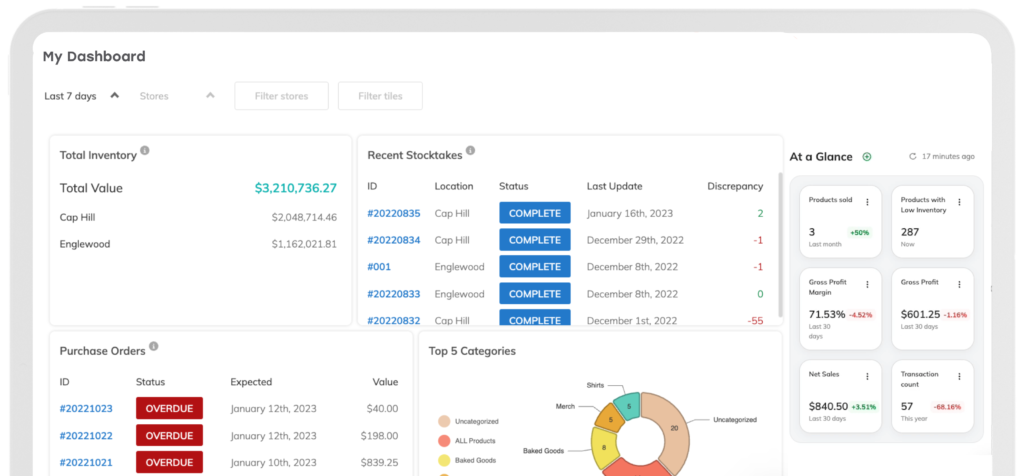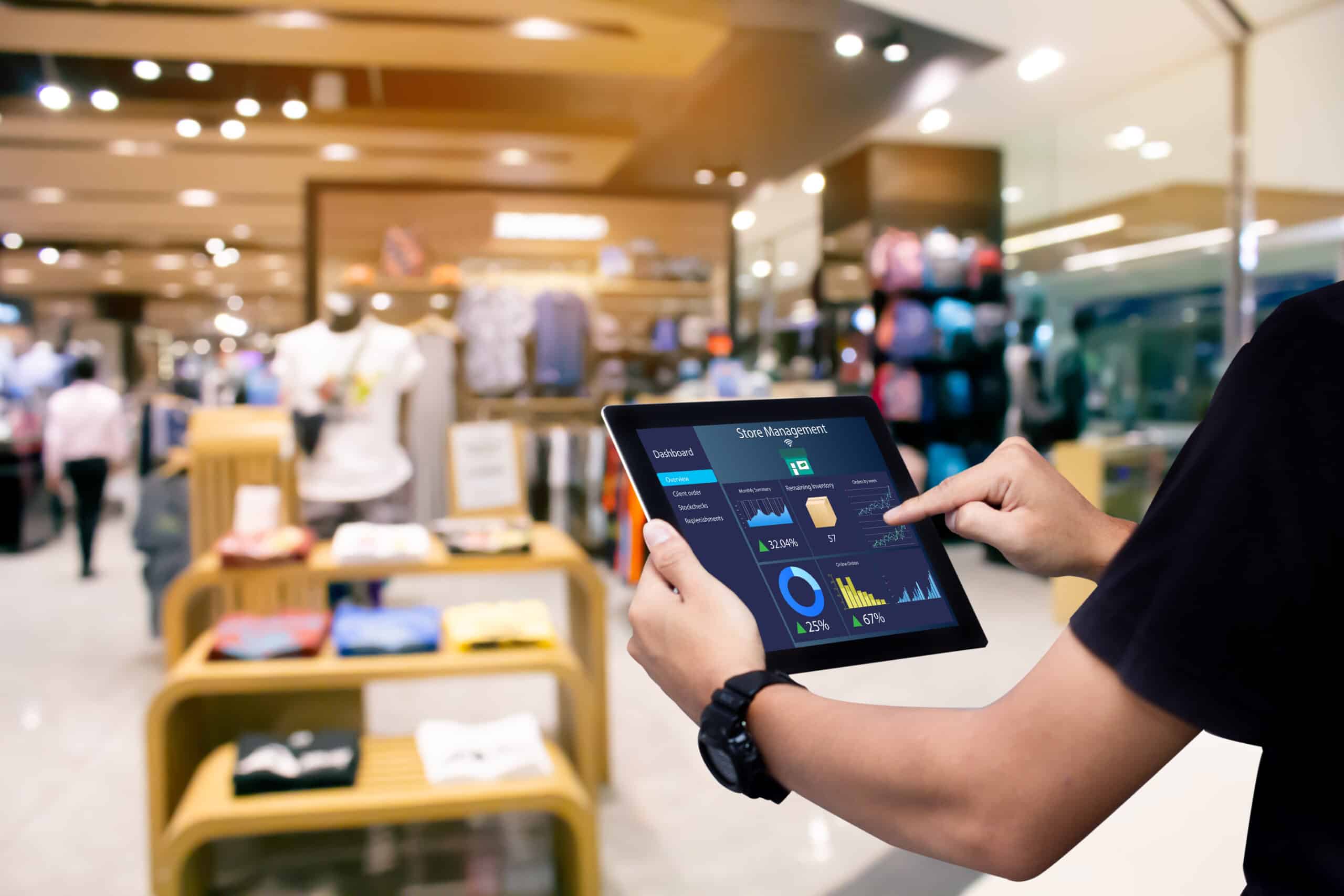
Ways To Prevent And Deter Theft
Shoplifting and other types of stealing are serious threats to small businesses and big retailers alike. Businesses can lose an average of 5 percent of their total revenue annually due to missing merchandise, asset misappropriation, and other fraud schemes that can cost thousands of dollars, if not much more. Monitoring, catching, and preventing theft can be a difficult task when it can take so many forms. How can you set up your business to be more vigilant and resilient to theft?
What You'll Learn In This Blog
What Are the Types Of Retail Theft?
Small business owners should be aware of two common types of theft:
- Employee theft. It’s been reported that three in every four employees have stolen from their employer at one point. Employee theft could be attributed to dishonest employees acting alone or instances of organized employee fraud. Also known as workplace theft or internal theft, it encompasses any instances of your employees stealing any kind of item. This can include physical goods as well as information, including sensitive data, misrepresenting hours work, and distributing unauthorized discounts to friends and family.
- Customer theft. Shoplifting or changing prices on an item are both efforts to steal something. Someone stashing a small item they didn’t pay for in their jacket can be theft, and so can placing a clearance sticker on a price tag for an item selling at full retail. On average, only one in every 48 shoplifters is caught.

How Does Theft Occur?
Theft occurs in two major ways: due to customers and due to employees.
Customer theft typically involves the person stashing an item out of sight, then attempting to walk out of the store without paying for the item. Employee theft can be a bit more complicated. It can come in the form of petty theft or inventory theft. Petty theft is the removal of secondary items that your company has purchased – such as pens or crates – from your store.
Inventory theft involves employees taking items you sell for their personal use without paying for them. For example, if you operate an apothecary, the stolen goods in inventory theft might be perfume in stock that hasn’t yet reached the sale floor. The employee has stolen the perfume before it gets there.
What employees can steal is not limited to merchandise on the floor or in inventory. Internal theft can also occur in the following ways:
- “Cooking” the company books: Accounting tricks that inflate payments and other line items can conceal theft.
- Cash larceny: This is the theft of cash that’s already been accounted for.
- Inventory record fraud: Recording stolen inventory as sold or falsely writing off damaged goods are primary examples of inventory record fraud.
- Time theft: Payroll schemes like time theft steal from employers’ payroll budgets.
Finally, intellectual property theft or certain pieces of sensitive information can be as valuable as merchandise but should be equally concerning for business owners. In a retail setting, this could involve stealing customer lists or taking credit card information.

How To Catch Theft
Regular cycle counts
Cycle counting is a great way to regularly ensure your inventory is accurate. Cycle counts are when a manager or other designated worker counts small portions of your inventory. It aligns your inventory costs and stock counts with what you actually have on hand. If you see gaps in your cycle count, theft could be to blame.
Automate cycle counts with barcode scanning and syncing updated stock counts for all the ways you sell.
Thrive Inventory management system also allows for user permissions. Require a manager’s approval before submitting a count and see exactly who made what inventory changes, increasing accuracy and security.
Install security camera
Cameras are a reliable way to catch thefts in the act. You could have certain employees watch real-time storefront video footage to stop customer theft or employee theft as it happens. Set up cameras in common places where these issues could occur, such as facing the cash register to limit cash theft. You can also place them in areas of the store stocked with very small items that can easily be stashed in a bag.
You could also set up cameras in your warehouse. This can help with inventory theft, where managers responsible during a shift can spot problems with other employees.
Audit your data
Set regular reminders on your company calendar to review important inventory data for any signs of potential fraud. If units of a specific product keep disappearing over time, try to identify a pattern, such as who was working during the time a product went missing. If inventory entries constantly need correcting, find out who’s recording them. You may learn that key employees are taking what’s not theirs– maybe even the person maintaining your records.
Use covert security codes
Many shoplifters are amateurs who are obviously trying to hide merchandise on their bodies or in their bags. That said, you probably shouldn’t walk up to these customers and confront them. That’s why you and your retail team should develop a covert visual or verbal code to identify shoplifters. A subtle hand gesture shared with a coworker can quickly help you identify and stop theft.
Once a shoplifter is identified, you may want employees to engage customers in a non-accusatory way, perhaps by simply asking if they need help or asking what they’re looking to buy. This may be enough to unnerve an uneasy and inexperienced shoplifter. Some retailers may want to involve law enforcement in an attempt to stop a shoplifter, while others may instruct employees not to engage potential thieves and let them leave. However you choose, if you don’t have these guidelines in place, it’s time to prioritize creating them.

Hire a small number of employees for specific roles
It’s much easier to detect inventory theft when two employees manage your stock than when five or six do so. When you slot these two employees in at very specific dates and times, you can easily check your inventory and data at the end of their shifts.
For example, if you own a cosmetics store, check to see if lipsticks stocked by a particularly popular brand match what’s in your system. If an employee ends a shift with 30 lipsticks recorded in inventory but only 28 are on the shelf, there may be an issue.
Ensure multiple people are involves with money management
The fewer eyes on the company’s books, the easier it becomes to commit fraud. Ensure that there are team members whose sole job is to double-check financial records and verify all transactions, including common transactions that can go unnoticed, like time cards or receipts for reimbursement.
Ways To Prevent Theft
Use inventory tracking technology
Stores without inventory management software may find themselves victims of theft. Using software can help prevent fraud, better secure your business, and ensure your profit margins do not decrease. The average cost of this kind of software is well worth what you could lose without it.
Drop by unannounced
You do want your team to know that you are keenly aware of what’s going on without appearing untrustworthy. Knowing that it won’t be easy to take merchandise or money can be a deterrent all its own. Even if your surprise visits are to do something nice like bring your assistant some coffee, it’s a simple way to check up.
Ring up employee purchases yourself
You never know if even the most trusted employee is being a bit generous with their use of your inventory for the gifting season. Instead, keep close tabs on your team members’ purchases so you know their items are rung up correctly.

Log everything
Show your employees your detailed and itemized breadcrumb trail – one that could lead right back to them if they steal. Doing so could make them think twice about committing a crime. Private, time-stamped records will give you the information you need to hold your employees accountable.
Setting user permissions in your inventory management system ensures your employees only have access to information that is relevant to them. Additionally, have full transparency on which user made changes to your inventory whether you’re at the shop or not.
Use retail displays to your advantage
Retail displays can play a role in securing merchandise. Strategically place in-demand products where employees can keep an eye on them. Similarly, best sellers and easy to steal items should be positioned toward the center of the store and away from the exits, where more employees coupled with a high-trafficked area may deter a would-be thief. The displays themselves can play a role, too: Consider the use of secured displays or place merchandise behind checkout if the item is a big target for shoplifters.
Create an employee theft policy
All your employees should receive (and sign) a copy of your employee handbook when they start working for you. This handbook should include clear policies that define stealing and clarify disciplinary action. Sure, defining what “steal” means may seem unnecessary. However, when it’s clearly defined, your employees should know not to take even seemingly insignificant items, like sticky notes from the office.
Polish your shoplifting policies
Plaster your store with signs detailing what you’ll do if you catch a customer stealing. Maybe you’ll call the police. Maybe you’ve noticed that the police often impose pretty hefty fines for shoplifting. All this information can cause potential shoplifters to think twice before making a choice that could negatively impact both them and you.

Best Practices For Theft Prevention
Alongside the above actions, the below set of more abstract best practices can be a deterrent as well.
- Value your employees. A simple way to help prevent employee theft is to help them feel valued at work. Showing interest in, and care for, your employees can help them feel like part of the team. Content employees are less likely to take merchandise or data from employers they are happy to work for.
- Set goals to drive employee morale. Sometimes, an employee steals because there’s little motivation to care or take pride in their work. Morale is a tricky thing to address, but problems generally stem from a sense of stagnation. Setting goals, even small ones, will give employees a sense of progress and accomplishment.
- Discuss theft from day one. A mistake that often gets made is never bringing up the subject in the first place. This should be part of mandatory first-day training for all new staff members. It’s usually best to say it in a way that assumes they already know it, but it’s important not to leave it unsaid.
- Teach your employees to engage customers. Of course, good customer service is always appreciated. In the context of theft prevention, though, regular attention from retail staff all but equates to surveillance. Ask your employees to greet every customer and to offer them assistance while they walk the aisles. This lets customers know that staff is watching, thereby deterring theft.
- Set a cleaning schedule. Shoplifting prevention can be as simple as maintaining a clean, organized store. An unkempt, disheveled store signals that you’re not paying attention to what happens on the floor. Potential shoplifters might notice this and conclude that, if you don’t pay attention to your store’s condition, you won’t pay attention to them. The notion of not being watched can be enough to encourage theft.
- Use strong passwords. For those concerned about valuable customer data, enable a policy that governs who can access information and how they can access that information. Be sure to regularly change passwords and limit access to help prevent data theft.
Prevention Means Putting Your Store - And Team - First
Theft may seem like an inevitable crime that’s impossible to prevent, but it doesn’t have to be. Customer service and retail display strategies can help minimize consumer theft, while security, robust policies, and smart staffing can help reduce instances of employee theft. With the right inventory tools at your disposal to help, instances of theft can be caught early and addressed quickly.
The Newsletter For Small Businesses
Weekly expert insights, industry trends, and inspiring stories designed to help you run your business with confidence.
The Only Inventory System That Actually Helps You Run A Healthy Business
Thousands of customers all over the world use Thrive Inventory to run a healthy business.
Thrive Inventory gives you control over all your inventory, sales channels, and metrics, allowing you to make the right decisions at the right time.
Keep Reading

The Newsletter For Small Businesses
Weekly expert insights, industry trends, and inspiring stories designed to help you run your business with confidence.
Try Thrive Inventory For Free
Add Thrive Inventory to your business and maximize your potential. With powerful and easy-to-use products, it’s time to take control of
your business and see what you can do with Thrive.




